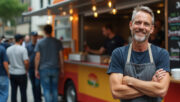5 Reasons you need to modernize your IT technology in 2025
Older technology can leave your business vulnerable to cyberthreats and operational inefficiencies. From advanced cybersecurity to streamlined customer support, what tools and capabilities do your business need to succeed in...






